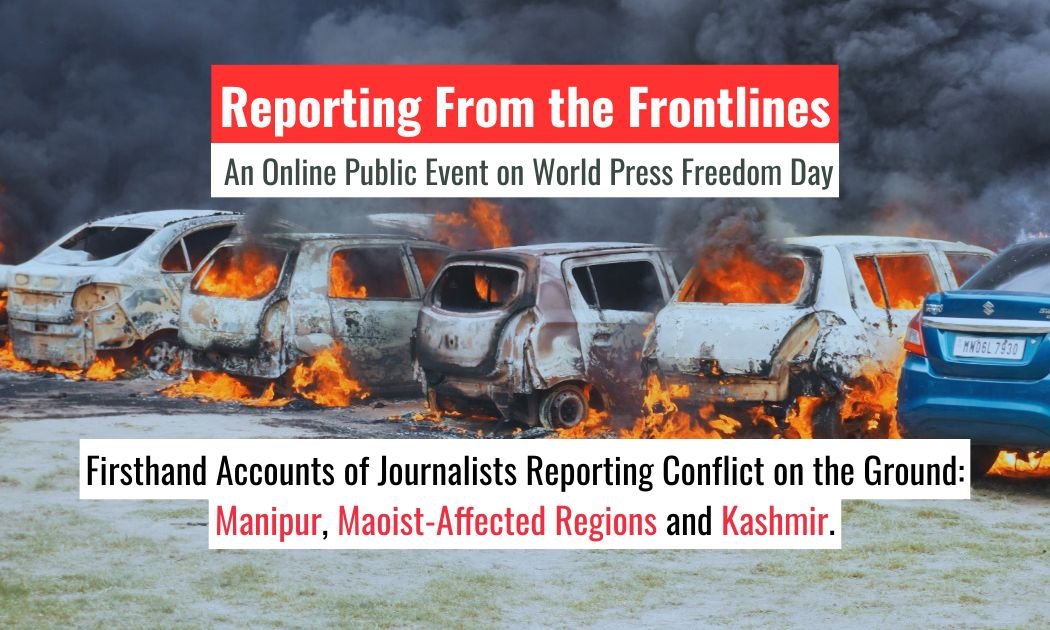Challenges of Reporting Conflict From the Frontlines
Journalists Share Firsthand Accounts on Newsreel Asia’s 4th Anniversary
By Newsreel Asia Team
May 17, 2025
To mark four years since its founding on World Press Freedom Day, Newsreel Asia hosted an online discussion with frontline journalists who have reported from some of India’s most volatile conflict zones. The conversation took place just days before the latest escalation of hostilities between India and Pakistan, which saw the use of missiles, drones and artillery fire along the Line of Control.
The panel featured journalists Greeshma Kuthar, Shubhranshu Choudhary and Ishfaq Naseem, each of whom has worked extensively in areas marked by prolonged conflict and state-citizen tensions.
Greeshma Kuthar, an independent journalist and lawyer from Tamil Nadu, has been covering the Manipur conflict since it erupted on May 3, 2023, amid a deeply polarised atmosphere. Over the past year, the violence has killed at least 260 people and displaced more than 60,000. Hundreds of homes and villages have been destroyed. Kuthar spoke about the ethical complexities of reporting from the region and the limited interest among editors in commissioning stories from the conflict zone.
Shubhranshu Choudhary, a veteran journalist and former BBC correspondent, brought over two decades of experience reporting on the Maoist insurgency. He is the author of “Vasu: With the Maoists in Chhattisgarh,” a detailed account of the conflict and his own journey through the affected regions. Choudhary spoke about on how the space for dialogue has shrunk, the challenges of gaining trust and the risks faced by local reporters who continue to document abuses on both sides of the fight.
Ishfaq Naseem, Senior Special Correspondent with the Outlook magazine in Srinagar, has reported from Kashmir for several national and international publications, including The Washington Post, The London Times and The Telegraph. He described the Kashmir conflict as more complex than Manipur or other regions, given its entanglement in India–Pakistan tensions. He noted the need for balanced reporting, especially in a landscape where local voices are often underrepresented.
The event came against the backdrop of India’s climb in the 2025 World Press Freedom Index, where it rose eight ranks—from 159 to 151 out of 180 countries. Despite this, the latest report by Reporters Without Borders (RSF), released on May 3, described India’s media climate as being in “deep crisis.” The report noted that while rankings may shift marginally, the underlying conditions for press freedom remain precarious.
According to RSF, India continues to be one of the world’s most dangerous countries for journalists. Each year, two to three reporters are killed due to their work, and many more face routine harassment, threats and legal action. The pressures are especially acute in regions experiencing conflict—places where information itself is contested, and journalism often becomes a risky act of defiance.
The conversation offers an unfiltered look at what it takes to report from the frontlines, and why press freedom cannot be measured solely in rankings or reforms, but in the everyday realities of those who continue to report despite the odds.

